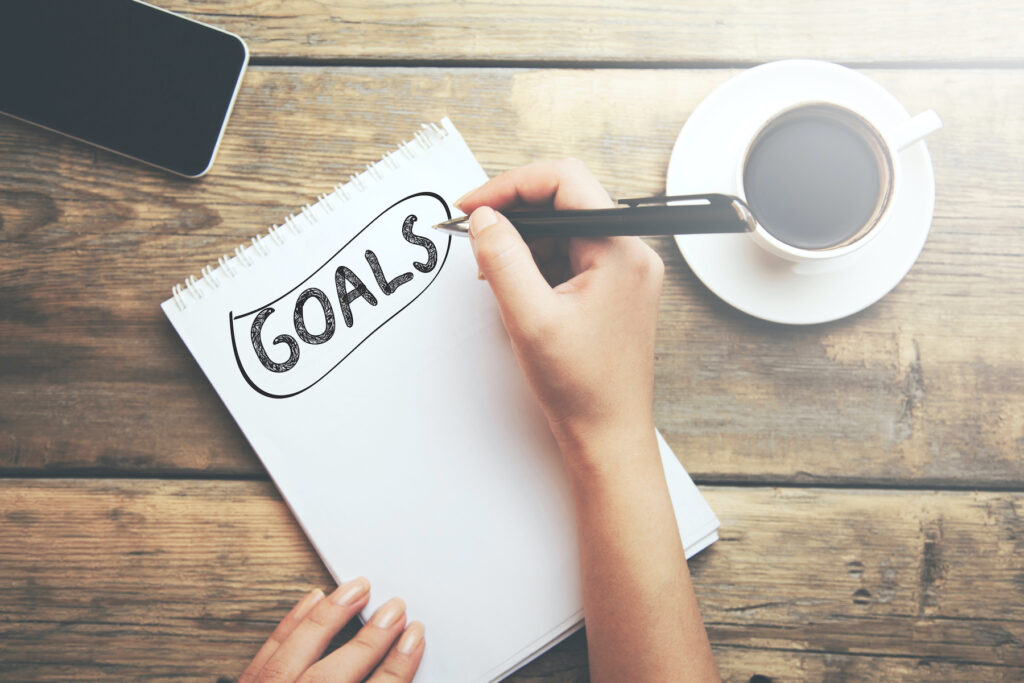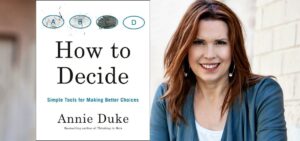To live and lead well, we must be decisive. While this may come naturally for some, many people struggle with it for a variety of reasons.
In our lives, what price do we pay when we’re stuck in “analysis paralysis” and unclear about how to move forward in the face of our options? In our organizations, do we want leaders who waffle, or ones who move forward despite uncertainty?
There’s a lot going on when it comes to making decisions. The neurological mechanics are breathtaking. When we make decisions, we’re using our brain’s prefrontal cortex for what’s called “executive function.” We’re drawing upon many cognitive processes, including: attentional control; working memory; cognitive inhibition and flexibility; reasoning; problem-solving; differentiation between conflicting thoughts; value determinations (e.g., is it good, bad, better, best, worse, worst?); prediction of outcomes; and more.
It’s no wonder so many people struggle with indecisiveness—wavering between different courses of action and having trouble choosing and moving forward.
The challenge of making decisions in organizations can be daunting given all the complexity. According to a McKinsey & Company Global Survey, only a fifth of workers reported that their organizations excel at decision making. Meanwhile, a majority report that much of the time they devote to decision making is used ineffectively.
Clearly, there’s much room for improvement on this front.
Indecisiveness can have painful consequences. For example, it can make a difficult situation worse, impede important progress, create delays (leading to new problems), cause frustration, and reduce our effectiveness, not to mention our credibility.
How to Be More Decisive: 20 Practices
Thankfully, there are many things we can do to improve our decisiveness. It’s a skill we can learn and develop. Here are 20 practices:
1. Get clearer about what we want—including clarity about our purpose, values, and vision, and goals.
2. Build our confidence (the right kind). True confidence, and not false arrogance, is earned through hard work and disciplined attention to growth and development.
3. Develop systems to make as many decisions as possible habitual, routine, or automatic. For example, have a regular workout routine at a certain time on certain days. This helps us avoid decision fatigue and frees up our cognitive resources for other choices.
4. Increase our self-awareness. By doing so, we can get a clearer sense of the conditions in which we work and decide best (and worst).
5. Recall that most decisions involve uncertainty, which invites anxiety. Learn to expect and account for that.
6. Develop mechanisms for coping with stress and anxiety, because they can fuel indecisiveness.
7. Recognize the difference between fear and actual danger. Our fears are often exaggerated compared to the actual dangers we face. Due to our evolutionary biology and the historical importance of focusing urgently on threats, our minds get carried away with worst-case scenarios.
8. Note that being decisive isn’t about always being right. Instead, it’s about being able to make decisions—even tough ones—quickly and confidently despite uncertainty.
9. Distinguish between irreversible and reversible decisions. This will help us determine situations in which we need a lot more information and ones in which we can act quickly and make adjustments later, if need be, without too much of a downside. (1)
10. Understand why we avoid making decisions. Common reasons include fear, excessive risk aversion, decision fatigue, prior conditioning, and perfectionism.
11. Start small and make less consequential decisions more quickly at first, building from there to bigger decisions.
12. Divide bigger decisions into smaller ones (or a series of steps) that are more manageable.
13. Practice making decisions more quickly and more boldly—and then take stock of how things turn out. Keep a record of decision-making duration, results, and how often things went better or worse than or as expected.
14. Summon more urgency into our lives. Remember that time is precious. Recall that wasted time is a common regret. Urgency helps us avoid stagnation. It propels us forward, especially if we have a compelling vision we’re on fire about.
15. Set deadlines for making decisions. Without deadlines, we risk having decisions keep slipping further into the future, often for no good reason. Deadlines can be helpful forcing mechanisms.
16. As the saying goes, “Don’t let the perfect be the enemy of the good.” Look for the point where we have enough information to make a reasonable, informed decision instead of waiting until we have nearly all the possible inputs. Focus on pursuing learning and growth, not perfection.
17. Recognize that we can’t be right all the time, and that’s okay. More often than not, delay and inaction are bigger problems than being wrong.
18. Employ the “only option test.” First, imagine that only one of the two options we’re facing was possible and then see how it feels. Then, imagine that the other option was the only possible one and see how it feels. Next, consider whether both options are good and it doesn’t matter too much which we choose. (2)
19. Focus on the most important decisions and don’t get caught up in the rest. Delegate some decisions to others.
20. Sleep on important decisions, or pray about them. When we do so, we summon our deeper wisdom and grace.
Reflection Questions
- To what extent is indecisiveness causing you problems, and in which areas?
- What will you do, starting today, to become more decisive?
Tools for You
- Traps Test (Common Traps of Living) to help you identify what’s getting in the way of your happiness and quality of life
- Leadership Derailers Assessment to help you identify what’s inhibiting your leadership effectiveness
- Goal-Setting Template (Beyond SMART Goals) to help you set goals you can achieve based on best practices
Related Articles and Resources
- “How to Be More Decisive in Your Life and Leadership”
- “The Perfectionism Trap–And How to Escape It”
- “Choice Overload and Career Transitions”
- “Getting Good at Overcoming Fear”
- “The Incredible Benefits of Being Action-Oriented”
- Alliance for Decision Education
- Chip and Dan Heath, Decisive: How to Make Better Choices in Life and Work
Postscript: Inspirations on Decisiveness
- “In any moment of decision, the best thing you can do is the right thing, the next best thing is the wrong thing, and the worst thing you can do is nothing.” -Theodore Roosevelt, conservationist, naturalist, writer, statesman, and former U.S. president
- “Indecision is the greatest thief of opportunity.” -Jim Rohn, entrepreneur and author
- “Indecisiveness is the number one reason for failure. Lack of ability to make a decision in a timely manner causes most people to fail with their projects and plans.” -Farshad Asl, business executive and author
- “Be decisive. A wrong decision is generally less disastrous than indecision.” -Bernhard Langer
(1) In a letter to shareholders, Jeff Bezos distinguished between one-way doors, where there’s no going back, and two-way doors in which we can simply “reopen the door and go back through.” He noted that too many big companies use one-size-fits-all decision making, treating all decisions like one-way doors, In the process, they slow things down, even when speed is imperative.
(2) Source: Erin Bunch, “Decisiveness Is a Learned Trait—Here Are 11 Tips To Master the Art of Decision-Making,” Well and Good, March 22, 2021.
+++++++++++++++++
Gregg Vanourek is a writer, teacher, and TEDx speaker on personal development and leadership. He is co-author of three books, including LIFE Entrepreneurs: Ordinary People Creating Extraordinary Lives (a manifesto for integrating our life and work with purpose, passion, and contribution) and Triple Crown Leadership: Building Excellent, Ethical, and Enduring Organizations (a winner of the International Book Awards). Check out his Best Articles or get his monthly newsletter. If you found value in this article, please forward it to a friend. Every little bit helps!








